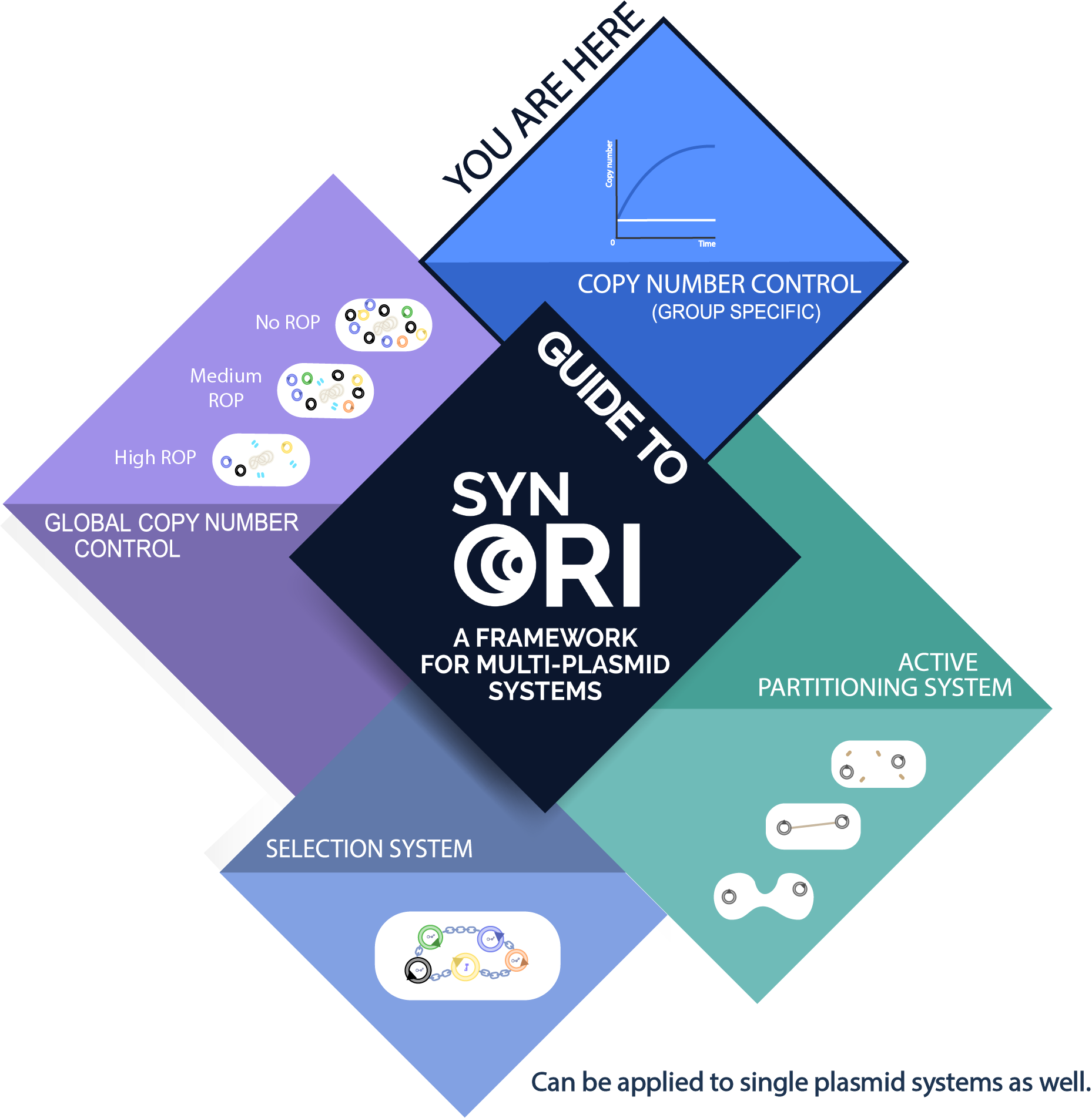Part:BBa_K2259088
ColE1 replicon (Deactivated RNA I, placed next to RNA II)
This is a ColE1 replicon with knocked-out RNA I promoter. A copy of RNA I is then placed next to RNA II.
This construct acts as a RNA I promoter knock-out control. When RNA I promoter is disabled, plasmid copy number increases dramatically (1000-2000 copies per cell). It is difficult to tell if RNA I promoter is disabled completely because the measurements at run-away replication are not precise enough. Yet, if RNA I gene copy is placed next to knocked-out origin of replication and the plasmid copy number goes down to wildtype amounts, we can say with certainty RNA I promoter is completely disabled.
See how this part fits into the whole SynORI framework by pressing here!
Sequence and Features
- 10COMPATIBLE WITH RFC[10]
- 12COMPATIBLE WITH RFC[12]
- 21COMPATIBLE WITH RFC[21]
- 23COMPATIBLE WITH RFC[23]
- 25COMPATIBLE WITH RFC[25]
- 1000COMPATIBLE WITH RFC[1000]
Contents
Introduction
Biology
ColE1 plasmid replication overview
ColE1-type plasmid replication begins with the synthesis of plasmid encoded RNA II (also called primer transcript) by RNA polymerase which initiates transcription at a site 555bp upstream of origin of replication. The RNA transcript forms a RNA - DNA hybrid with template DNA near the origin of replication. Hybridized RNA is then cleaved at the replication origin by RNAse H and serves as a primer for DNA synthesis by DNA polymerase I (Figure 1. A).[1]
Initiation of replication can be inhibited by plasmid encoded small RNA, called RNA I . Synthesis of RNA I starts 445 bp upstream of the replication origin and proceeds in the direction opposite to that of RNA II synthesis and terminates near the RNA II transcription initiation site. RNA I binds to RNA II and thereby prevents the formation of a secondary structure of RNA II that is necessary for hybridization of RNA II to the template DNA (Figure 1. B).[2]
For RNA I to inhibit primer formation, it must bind before the nascent RNA II transcript extends to the replication origin. Consequently, the concentration of RNA I and the rate of binding of RNA I to RNA II is critical for regulation of primer formation and thus for plasmid replication. [3]
The interaction between RNA I and RNA II can be amplified by Rop protein, see part:BBa_K2259010.
Usage with SynORI (Framework for multi-plasmid systems)
About SynORI
SynORI is a framework for multi-plasmid systems created by Vilnius-Lithuania 2017 which enables quick and easy workflow with multiple plasmids, while also allowing to freely pick and modulate copy number for every unique plasmid group! Read more about [http://2017.igem.org/Team:Vilnius-Lithuania SynORI here]!
Purpose of this construct in SynORI framework development
This construct acts as a RNA I promoter knock-out control. When RNA I promoter is disabled, plasmid copy number increases dramatically (1000-2000 copies per cell). It is difficult to tell if RNA I promoter is disabled completely because the measurements at run-away replication are not precise enough. Yet, if RNA I gene copy is placed next to knocked-out origin of replication and the plasmid copy number goes down to wildtype amounts, we can say with certainty RNA I promoter is completely disabled.
References
- ↑ Itoh, T. and Tomizawa, J. (1980). Formation of an RNA primer for initiation of replication of ColE1 DNA by ribonuclease H. Proceedings of the National Academy of Sciences, 77(5), pp.2450-2454.
- ↑ Tomizawa, J. (1984). Control of cole 1 plasmid replication: The process of binding of RNA I to the primer transcript. Cell, 38(3), pp.861-870.
- ↑ Tomizawa, J. (1984). Control of cole 1 plasmid replication: The process of binding of RNA I to the primer transcript. Cell, 38(3), pp.861-870.
| None |


